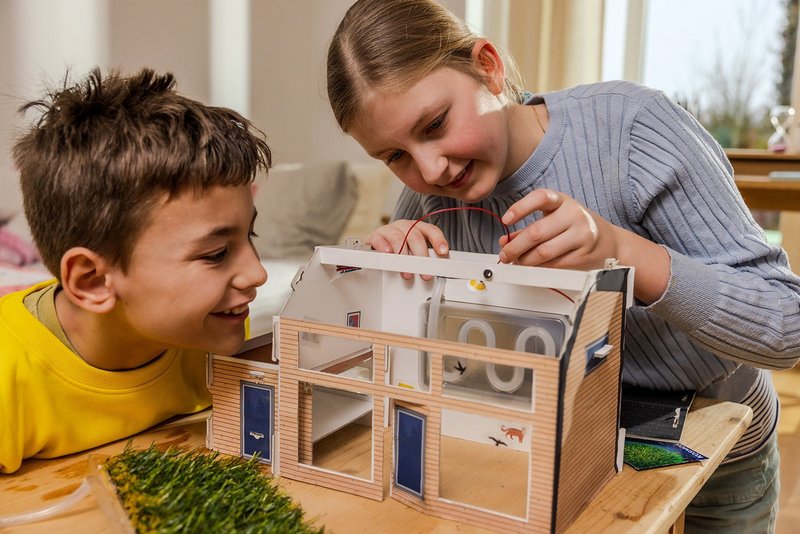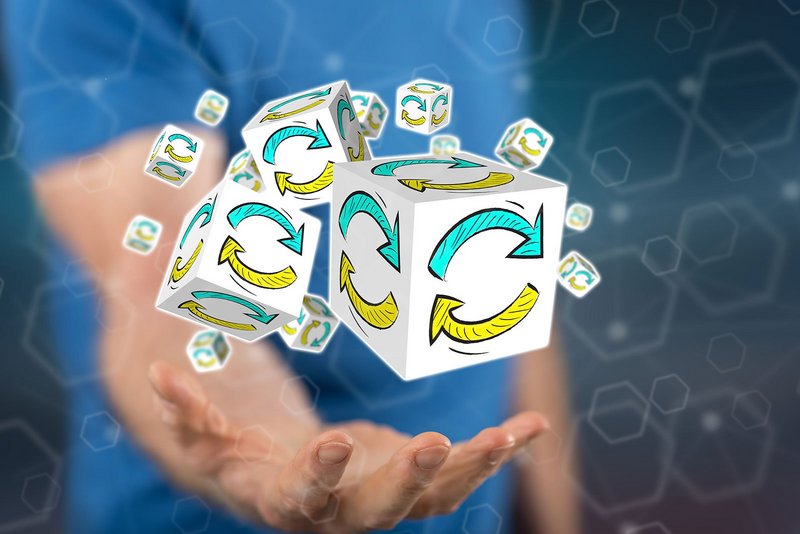
70 years of spiel gut - vision and reality
The world in the playroom: Toys reflect the reality of children's lives
By Sibylle Dorndorf
The countdown is on - Christmas is just a few weeks away. The wish lists have been written. Parents, godparents and grandparents are on the annual gift hunt. And everyone really only wants one thing: to give the gift of good toys. In Germany, they are sure to come across the round, orange-coloured seal with the inscription ‘spiel gut’ (‘play well’). This seal is one of the most important and prestigious awards for good and educationally valuable toys in Germany - and has been for 70 years.
Guidance for consumers

The seal has never been more valuable than it is today, because in the age of e-commerce, toys are no longer only bought in specialised shops. Gift-givers who buy toys on online marketplaces may be taking a high risk. 95 per cent of the toys purchased in a test purchase on Temu violate EU safety regulations and pose a serious risk to children. This was announced by the European toy association Toy Industries of Europe, which purchased and tested 19 toys on the online marketplace as part of a test purchase. None of the toys complied with EU regulations and 18 of them posed a serious safety risk to children. Consumer advocates have long warned against cheap sellers, as has the German Association of the Toy Industry (DVSI). DVSI Managing Director Ulrich Brobeil: ‘The problem has now been recognised, but solutions have yet to be found.’ Legislation is hesitant and toy buyers are unsettled.
What are actually good toys?
Even those who find their way to a specialised retailer are initially overwhelmed by the range of toys on offer and ask themselves the question: What is actually a good toy? The Arbeitsausschuss Kinderspiel und Spielzeug e.V., in persona das spiel gut founding member, developmental psychologist Hildegard Hetzer, gives a clear answer: play is the child's way of acting.The role of good toys is therefore self-explanatory.The outstanding features: A child-friendly design, high-quality material, simple shapes, clear colours and a convincing overall design concept.
The origins of spiel gut

In 1954, between the post-war period and the economic miracle, the Arbeitsausschuss Kinderspiel und Spielzeug e.V. was founded by practitioners and scientists from the fields of medicine, natural science, psychology, education, art and architecture.The idea: to demonstrate from a scientific and artistic perspective what is meant by a good toy.The occasion: an exhibition in the Ulm Museum, which was to be dedicated to the topic of ‘beautiful toys’. However, even during the planning stage, it became clear that valuable toys, meaning ‘good’ toys, should not only be beautiful and of high quality, but also incorporate many other aspects.
In a working group at the Ulm adult education centre led by Roderich Graf Thun, a former toy manufacturer, parents and teachers were asked about this topic. Lecturers and students from the Ulm School of Design were also consulted.
Toys through the ages
70 years is a long time. Playrooms look completely different today than they did in the 1950s. The reality of children's lives has changed and so have their preferences and play worlds. It may sound exaggerated to quietly accuse the industry of dictating what is played with, but in times of digital and media-orientated children, attractive and target group-appropriate marketing and the skilful staging of brand worlds play a decisive role. Desire is aroused, children's media heroes are also figures of identification in everyday play.
In addition, the applicable safety standards often have the effect of restricting play, an aspect that the working committee must keep in mind when evaluating a product, even though it sets very clear and non-negotiable requirements for safe toys. Prevailing - and frequently changing - trends also play a role, for example in the colouring of toys. The current differentiated colouring of toys is due to the spirit of the times.
Criteria for good toys
According to recent studies, children play for more than 10,000 hours. Up to six hours a day during the first two years, then up to four hours a day - if we let them.Children's play is something to be taken seriously and is vital for every child. The Children's Play and Toys Working Committee is aware of this. Its members act accordingly.
12 criteria still form the basic framework for the spiel gut assessment of toys today:
- Is the toy suitable for the recommended age group?
- Does the toy encourage fantasy and imagination?
- Does the toy tie in with age-appropriate life experiences?
- Does the toy offer varied and continuous play opportunities?
- What is the design, colour and shape of the toy?
- Is the toy too small, too big, too light or too heavy?
- Are the number and quantity appropriate?
- How is the toy constructed in terms of its mechanics?
- Is the durability and lifespan appropriate for the purpose of the toy?
- Is the toy safe?
- Is the toy sustainable?
- The price of the toy is not taken into account in the assessment.
What is assessed?

Toys and games for children aged 0 to 14 are assessed: from baby rattles to experiment kits, toys for indoors and outdoors. The spiel gut seal is awarded to products that fulfil the above criteria and pass the practical test with children.
The guidelines for the members of the working committee are clearly outlined: Good toys support children's development by stimulating their imagination rather than restricting it, by not disappointing expectations and by offering varied and continuous play opportunities. And, of course, good toys are environmentally friendly, safe and fit the purpose of play in terms of durability and lifespan.
What is excellent?
The spiel gut database is an excellent guide for parents, educators, pedagogues and all those who are looking for good toys. It contains over four thousand excellent toys. The database is updated monthly. To make the search easier, the toys are sorted by category and sub-category. The search function can be filtered by keyword, age or price.
70 years of commitment to good toys
The technical and aesthetic changes in toy design as well as the changing play habits of children are incorporated into the assessment work of the working committee.
This requires each individual spiel gut member to differentiate the selection criteria in line with the times. It is thanks to their commitment that the spiel gut seal is now one of the most important and renowned awards for good and educationally valuable toys in Germany.
Die Idee von spiel gut
- Consumer advice for games and toys: Informs everyone who is interested in good toys - independent of the toy industry and retailers.
- Voluntary commitment from experts: Most of the experts are parents themselves and all of them work on a voluntary basis.
- Decision-making aid for good toys: The orange spiel gut seal is awarded to toys that fulfil the spiel gut assessment criteria and pass the practical test with children.
- Non-profit and independent: spiel gut is a non-profit organisation and is financed by the sale of spiel gut guidebooks and the nominal fee for the spiel gut seal. The Federal Ministry for Family Affairs, Senior Citizens, Women and Youth supports the organisation's work.
About the author
Sibylle Dorndorf has been covering the toy industry for almost 30 years. Most recently, the trade journalist was editor-in-chief of the TOYS magazine family at the Göller Verlag publishing house, Baden-Baden, Germany. Her passion: companies that reinvent themselves, brands that position themselves credibly, people who have something to say and products with a future.


![[Translate to Englisch:] [Translate to Englisch:]](/fileadmin/_processed_/9/1/csm_20241007_Teaser_Healthy_Heroes_V2_002de23fb4.jpg)

